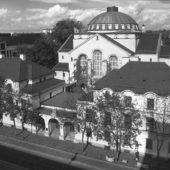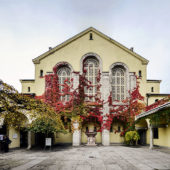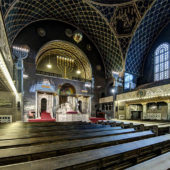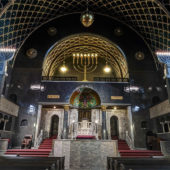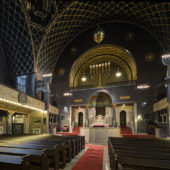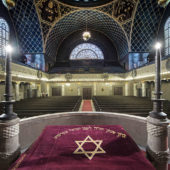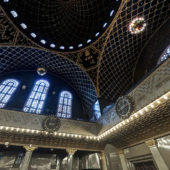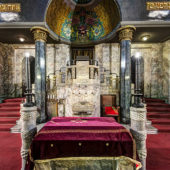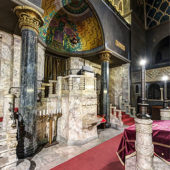One of few German synagogues to survive World War II.
There has been a Jewish presence in Augsburg since 1290. By the early part of the 20th Century the Jewish community had grown to about 1200, requiring a larger synagogue. In 1913 the Augsburg Jewish community hired Fritz Landauer, a young Jewish architect from Munich to design a new synagogue for their burgeoning congregation. Landauer, a practitioner of modernist architecture collaborated with Dr. Heinrich Lompel to design a building that is often described as Art Nouveau in style yet actually combines Moorish and Oriental details with Art Deco forms. Ahead of their time, the synagogue’s predominantly black interior looks like a futuristic vision.
Although the building was badly damaged in the Kristallnacht, it is one of very few German synagogue buildings to survive World War II. Today the shul houses a Jewish museum as being a synagogue for the Jewish community, most of whom are immigrants from the former Soviet Union. An irony of history is that there are now more Jews living in Augsburg, Germany than before the Nazi Era.

